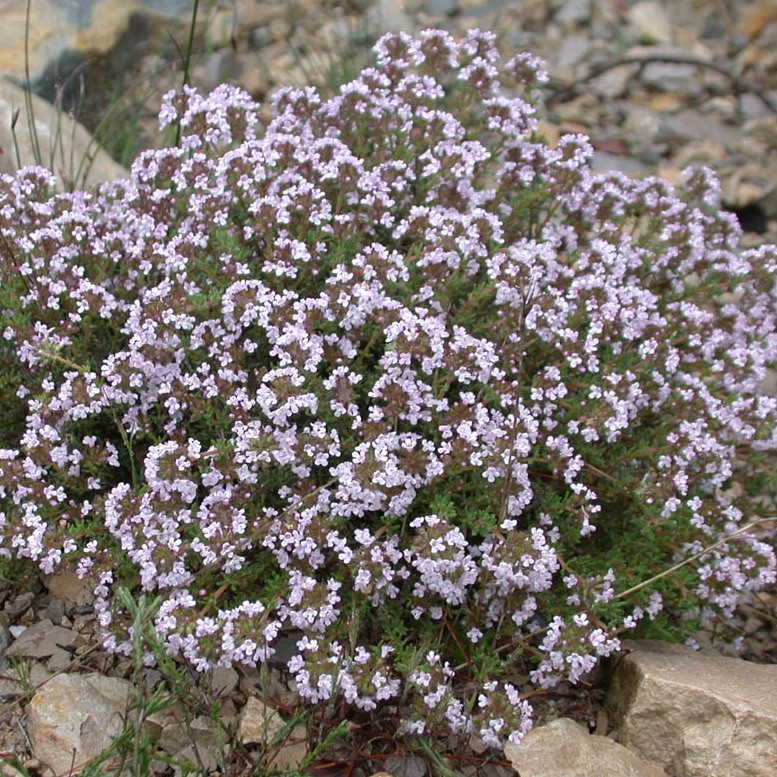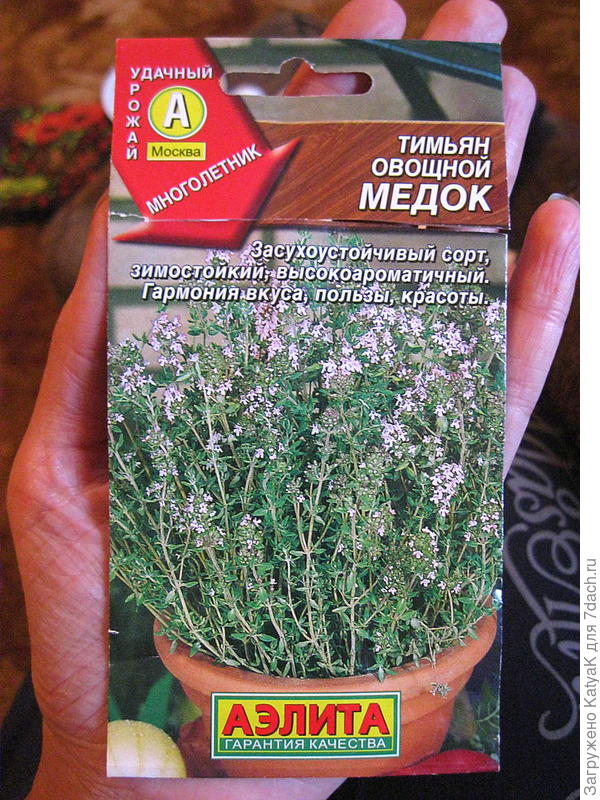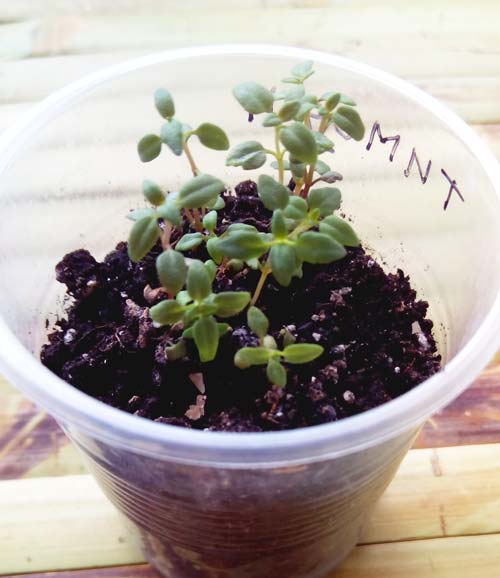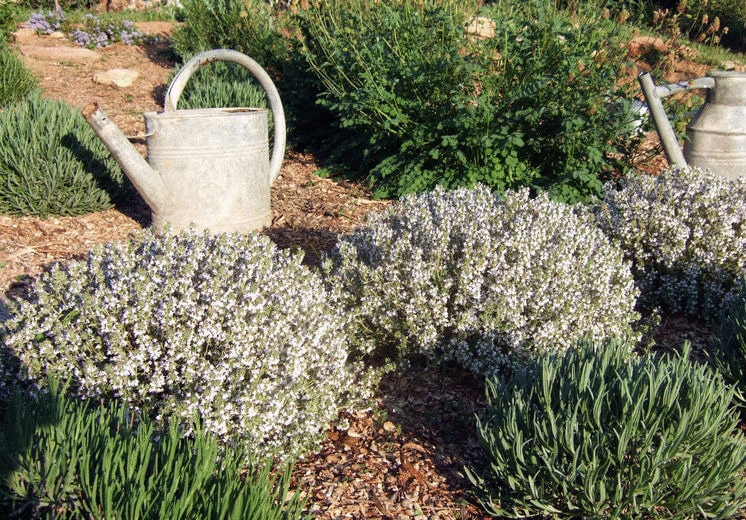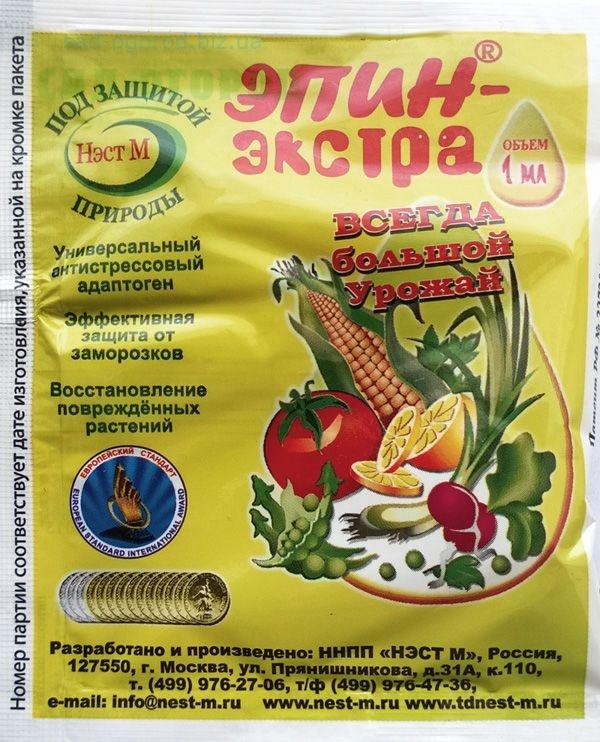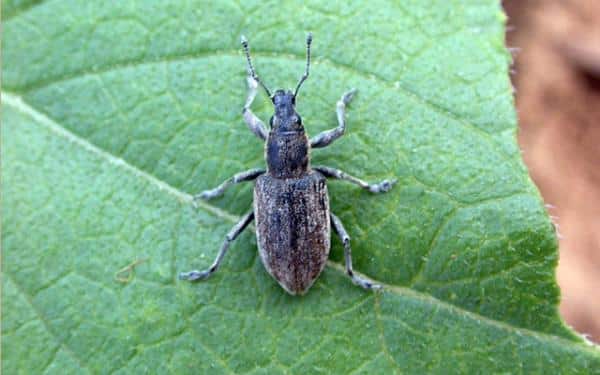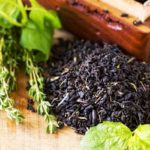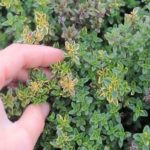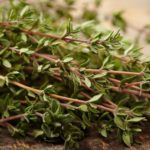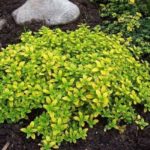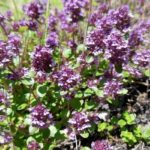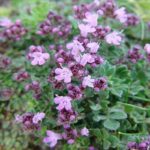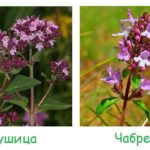Thyme grows in forest clearings, meadows, and on mountain slopes; it takes root both in the middle zone and in the tropics. It decorates alpine hills and flower beds in country and suburban areas with a green carpet, and fills balconies and rooms with aroma. Medoc thyme is known not only as an ornamental crop and a spice; this thyme is valued for its medicinal properties, tart, but also pleasant bitter taste. In the thick Maslenitsa smell of the seeds, you can feel the aroma of wild rosemary leaves, strawberries, and lingonberries.
Features of the variety
Vegetable thyme Medok is a perennial crop. The shoots of the plant spread along the ground in an original way.They produce pink buds that form inflorescences. The small oblong leaves of thyme have a green tint on the outside and a purple color on the inside.
The variety is different:
- drought resistance;
- high productivity;
- long growing season.
Greens are harvested within 5 months after germination.
The honey tree tolerates light frosts well, but is demanding on lighting and loves loose and light soils; the seeds will not sprout in clay soil.
50 g of aromatic mass is cut from one plant per season.
Useful properties of the variety
Dried leaves and stems of Medok thyme are suitable for pickling and canning vegetables; sauces and dishes are seasoned with fresh herbs. This type of thyme makes delicious and healthy tea.
All parts of the plant contain:
- vitamins of groups C and B;
- tannins;
- essential oils;
- mineral salts.
In the pharmaceutical industry, tinctures and syrups are produced from thyme, which have a bactericidal effect and kill harmful microbes.
Medicines based on thyme heal wounds and suppuration, effectively fight scabies and lice, and eliminate inflammation of the gums and tonsils.
When using Medka, as well as other types of thyme:
- Appetite improves.
- Swelling resolves.
- The cough goes away.
- The nervous system calms down.
Thyme restores libido, normalizes the menstrual cycle in women, and neutralizes snake venom. Tincture from the plant helps cope with alcoholism.
In official and folk medicine, the herb is used in the treatment of gastritis, atherosclerosis, and cholecystitis.
How and when to plant
Seeds of creeping thyme Medok are sown in the garden in spring or autumn. Greens are grown on the windowsill all year round.Mature grass is propagated by cuttings, and bushes are divided. To speed up the ripening of leaves, the seedling method is used.
Seeds
Small thyme grains are sown in open ground to a depth of 5-7 mm. A little peat or sand is poured on top. The ground is covered with plastic film. It is removed when the thyme begins to sprout.
In the garden bed, Medka seeds are placed every 4-6 mm, leaving 20 centimeters between the rows. In a flowerbed or alpine hill, the sprouts do not need to be thinned out, and then you get a thick carpet. There will be a lot of greenery if you sow the variety in late autumn, when the ground is already frozen. In regions where there is no snow and winters are cold, thyme is covered with spruce branches.
Seedling method
Grass seeds germinate poorly and take a long time. Tender shoots in open garden beds often die. Therefore, many gardeners prefer the seedling method of growing Medoc thyme. The bottom of a box or other container up to 10 cm deep is filled with expanded clay, gravel or small crushed stone. Soil is poured onto the drainage layer. After watering, the seeds are placed evenly and covered with sand on top. The box is wrapped in film. It is transferred to a cool room when the sprouts emerge. When 3 leaves are formed, the thyme is picked and the seedlings are thinned out.
Seedlings are sent to the garden at the age of 2 months. They start work in cloudy weather.
Care
Regardless of where thyme is planted in a greenhouse, on a windowsill or in open ground, the bushes will be lush and leafy if they are properly cared for. The grass will not be green in heavy soil where water stagnates.
Watering
When growing thyme in open ground, you need to ensure that the soil does not dry out. In the summer heat, thyme requires more moisture than in spring.When it begins to bloom, the number of waterings is increased to 2 or 3 times a week.
It happens that it rains constantly, water stagnates in the ground, and the roots can rot.
After each moistening, the soil must be loosened, otherwise the resulting crust will prevent the plant from saturating with nutrients.
Top dressing
Before sowing seeds or planting bushes in a garden bed, add 30 g of nitroammophoska and rotted manure to the ground at the rate of 2 kg per square meter.
During the summer, especially after cutting the greenery, thyme is fed with fertilizers that contain a complex of minerals. The seedlings are sprayed with Epin-extra. It must be hardened by lowering the temperature in the room. When growing Medok thyme, additional lamps are installed on the windowsill.
Pests and diseases
Thyme is rich in fragrant oils, which many insects fear. However, in the absence of care and failure to follow the rules of agricultural technology, pests appear on the leaves and stems.
Thyme suffers from:
- weevils;
- meadow moth;
- sand slugger.
In a short time of planting, thyme is destroyed by aphids. To protect the crop from insects, the above-ground parts of the plants are sprayed with insecticides. Fungal diseases occur when there is excess moisture and improper care.
Harvesting
You should not pick fragrant greenery with your hands, since the bushes are pulled out by the roots. Cut leaves and stems are dried in air or in a ventilated area. Thyme is stored in bunches, which are best hung on the wall, but so that the sun does not fall on them.
To make tea or use it as a spice, Medoc thyme is cut before the flowers appear. Among the people, people believed in the mysterious power of the plant and collected it for the Dormition of the Virgin Mary or for Trinity.Thyme is cut for drying when there is no dew and harvested in May or June.


